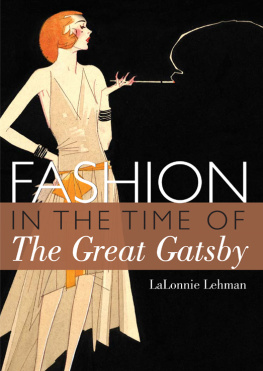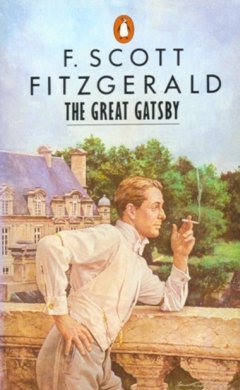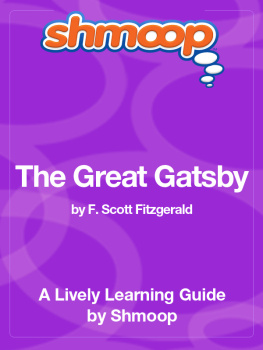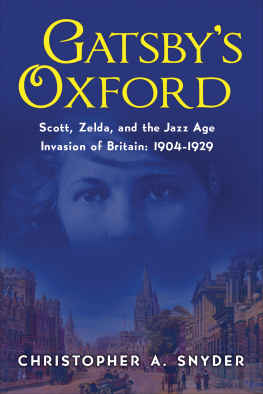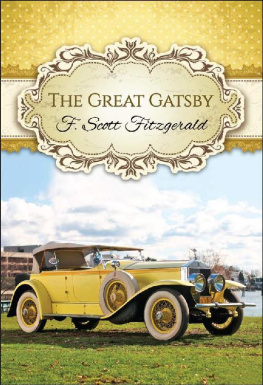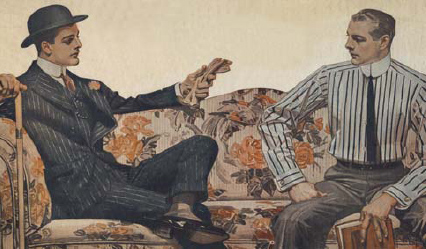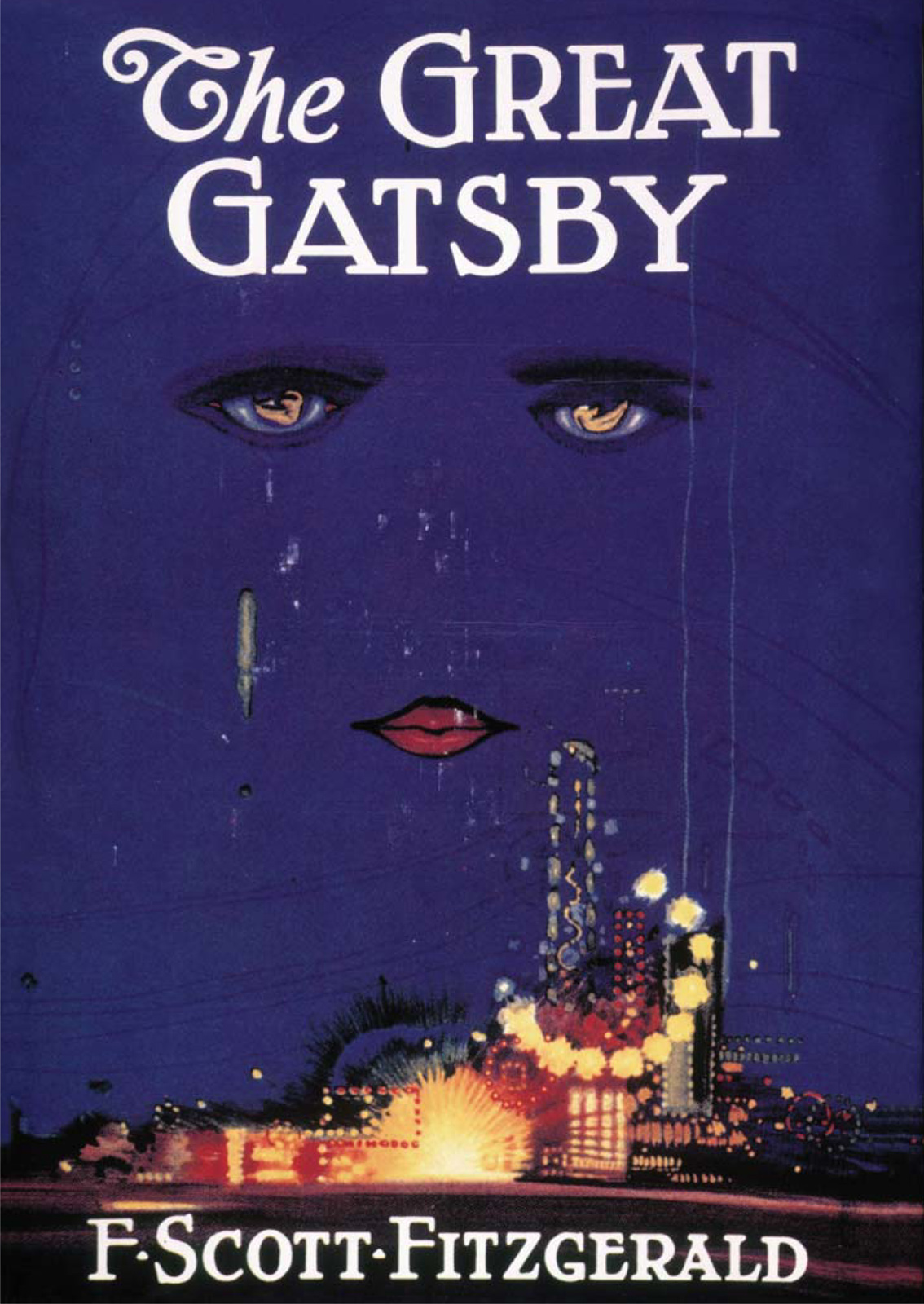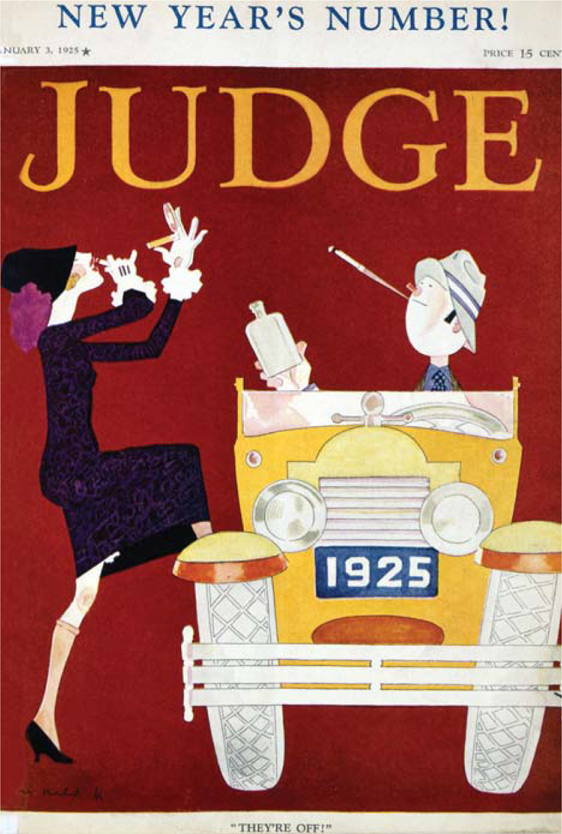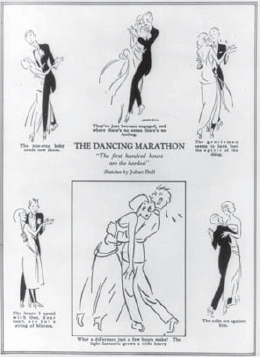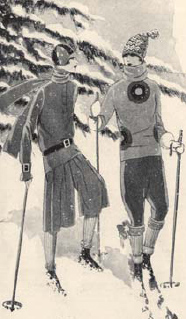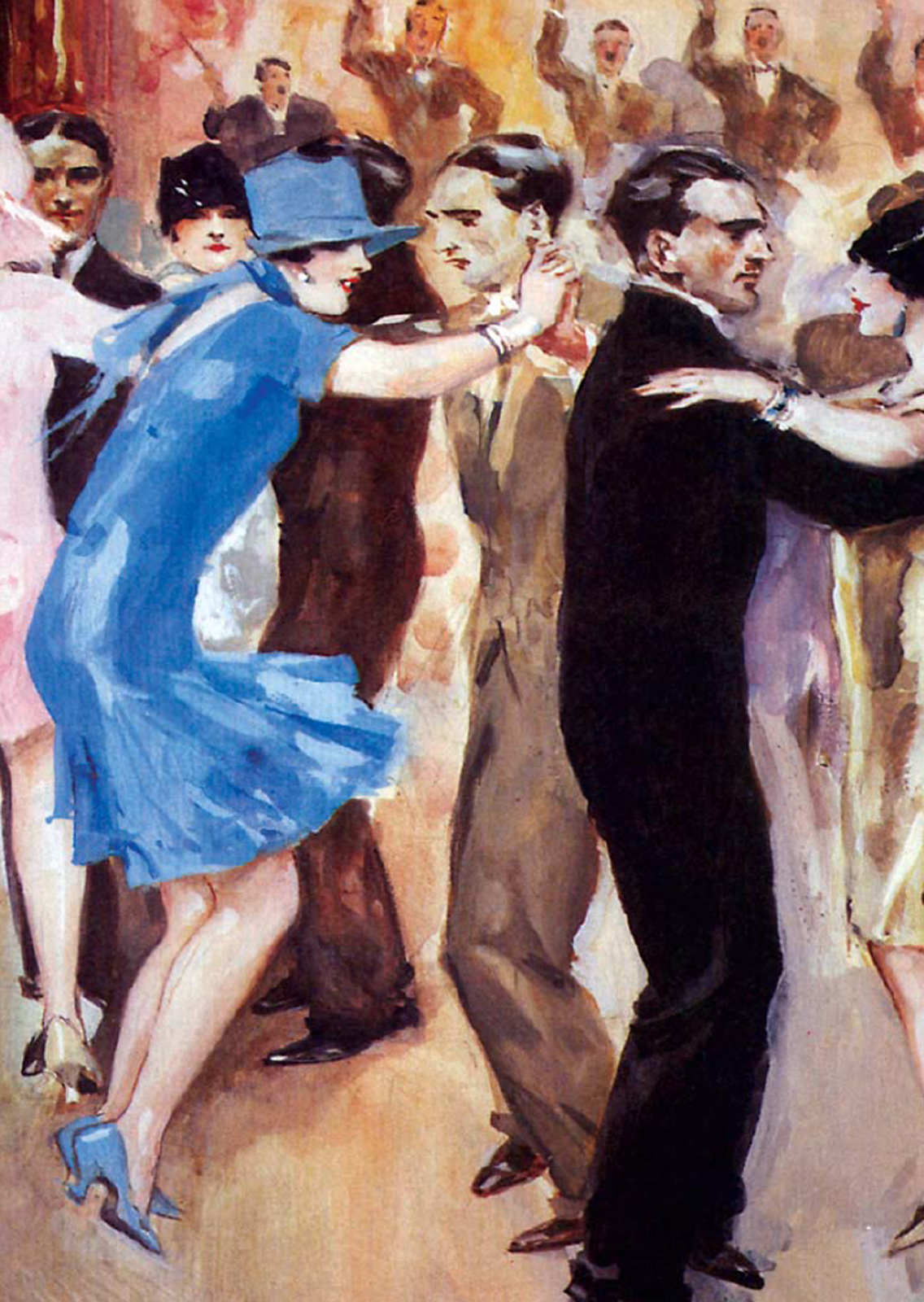FASHION
IN THE TIME OF THE
GREAT GATSBY
LaLonnie Lehman
SHIRE PUBLICATIONS
CONTENTS
The cover for the first edition of The Great Gatsby, published in 1925.
CAPTURING THE 1920S
P RESIDENT Woodrow Wilsons demand that America take on new responsibilities of world leadership afterWorldWar I was rejected as the war brought feelings of disillusion and alienation to most of the youth of America. By the 1920s, they were choosing to ignore the problems of the country and live for the moment instead of the future.
These young people became the focus of attention when they adopted a cynical, romantic attitude toward life and embraced new ideas. Youthful was the new byword for America. Coupled with the affluence of America during the 1920s, the new attitudes led to the increased consumption of goods and the establishment of leisure-time sites such as dance halls, nightclubs, sports arenas, amusement parks and movie theaters.
Female emancipation gathered pace after the war as many women refused to return to prewar ideals of domesticity. Women gained the vote in 1920, attended and earned degrees at colleges and universities, moved into professional workplaces and participated in new leisure activities.
These changes in society brought a drastic shift in culture and morals. Drinking, dancing, smoking cigarettes and driving automobiles by both men and women was criticized by the older generation and admired by the new. The mass production of cheap newspapers, tabloids and magazines meant that all classes could read about current and sensational events.
Into this atmosphere came one of Americas most-read novels of the period: The Great Gatsby, published in 1925. Written by F. Scott Fitzgerald, the celebrated author of other novels and many magazine articles, The Great Gatsby embodied the lifestyle of the Roaring Twentiesa sophisticated life that included hard liquor, cigarettes, expensive cars, love affairs, new dances, new jazz music, and new fashions. This appealed to young men and women eager to get on with an exciting life. Fitzgerald wrote, The uncertainties of 1919 were overAmerica was going on the greatest, gaudiest spree in history.
Fitzgeralds characters reflected his own values. He was educated at Princeton but left before graduating, served in the United States Army in 191719, and made his living by writing. After he married Zelda in 1920, they lived the life of the Jazz Age: a decadent social and private life on the urban East Coast, a few years in Paris and traveling in Europe. They lived like other artists of the 1920s by spending lavishly, purchasing expensive automobiles, drinking heavily, and throwing and attending parties. Descriptions of parties in The Great Gatsby included many guests, full orchestras, and dancing into the wee hours.
A 1925 cartoon that shows a young man in a jalopy smoking a cigarette in a long cigarette holder and holding a flask containing spirits. The young flapper stepping on the running board shows her hosiery rolled down below her knee as she applies lipstick and looks in the mirror of her compact.
Front cover illustration by Helen Dryden for Delineator, a womens magazine which featured fashion, sewing patterns, and fiction.
The Dancing Marathon, an illustration in Judge (May 1923).
The change in morals during the 1920s was more pronounced for young women, as they moved about without chaperones, wore new hairstyles, used makeup and lived independently. Young women also overthrew accepted posture, speech and etiquette. Their presence and manners revealed a new woman who could engage in all of the activities that were acceptable for men.
The new sport of skiing in mountain resorts in America and Europe required specific fashionable clothing. A dark tweed wool sweater with leather belt is worn with a divided skirt. A wool sweater with circle designs is worn with breeches. Soft, oiled ski shoes with wool ski socks, wool gloves, a colorful scarf and a helmet-style cap complete the outfit.
Clothing fashions for American men and women quickly expanded to accommodate the new lifestyle of the 1920s. Clothing for men featured new garments and softer tailoring. For women, the shortening of skirts and revamping of the corset affected the wearers silhouette, movement and comfort. The introduction of sports clothing allowed both men and women to participate in sports in comfort.
This group of couples are dancing to the new jazz music. The men are in suits that are kept buttoned while the women are in short dresses with fullness below the hipline, and plunging backs. The woman in blue wears shoes and a cloche hat that match the color of her dress.
THE GOOD TIMES
A POPULAR SLOGAN OF THE 1920s was Eat, drink and be merryfor tomorrow we may die. Many young Americans, often called the flaming youth, were rejecting the etiquette of the past and daring to create a new style of living. The young women were described as restless, seductive, greedy, and unrestrained. The young men were labeled cynical. They led the way in flouting the law and talked about living in a world ruined by their elders. In The Great Gatsby Myrtle says about her first meeting with Tom you cant live forever; you cant live forever.
For the first time, men and women consumed alcohol together, bringing about a major social change. Prohibitionthe law that made the sale, transportation and manufacture of liquor illegalwas established in 1919. The public rebellion against this law created an illegal industry, called bootleg, of making, selling and transporting spirits. Rye whiskey and gin were two of the types of alcohol most widely consumed illegally. The excitement of finding a place to consume alcohol and avoid arrest was the focus of rebellious young men and women. The speakeasy, an establishment which illegally sold alcoholic beverages, became a place where one could drink, have clandestine affairs and dance while hoping to escape the notice of the police. Fitzgerald says in The Great Gatsby, The bottle of whiskeya second onewas now in constant demand by all present

